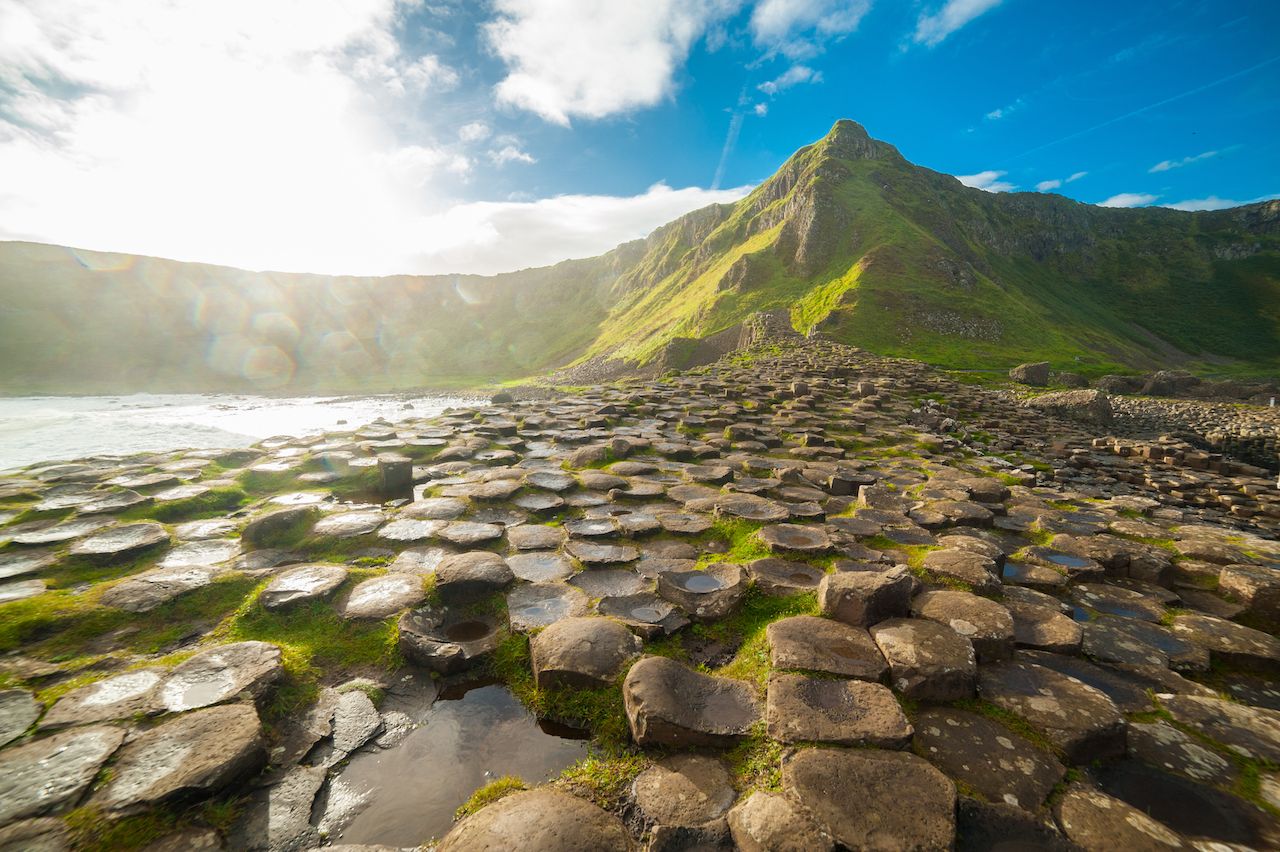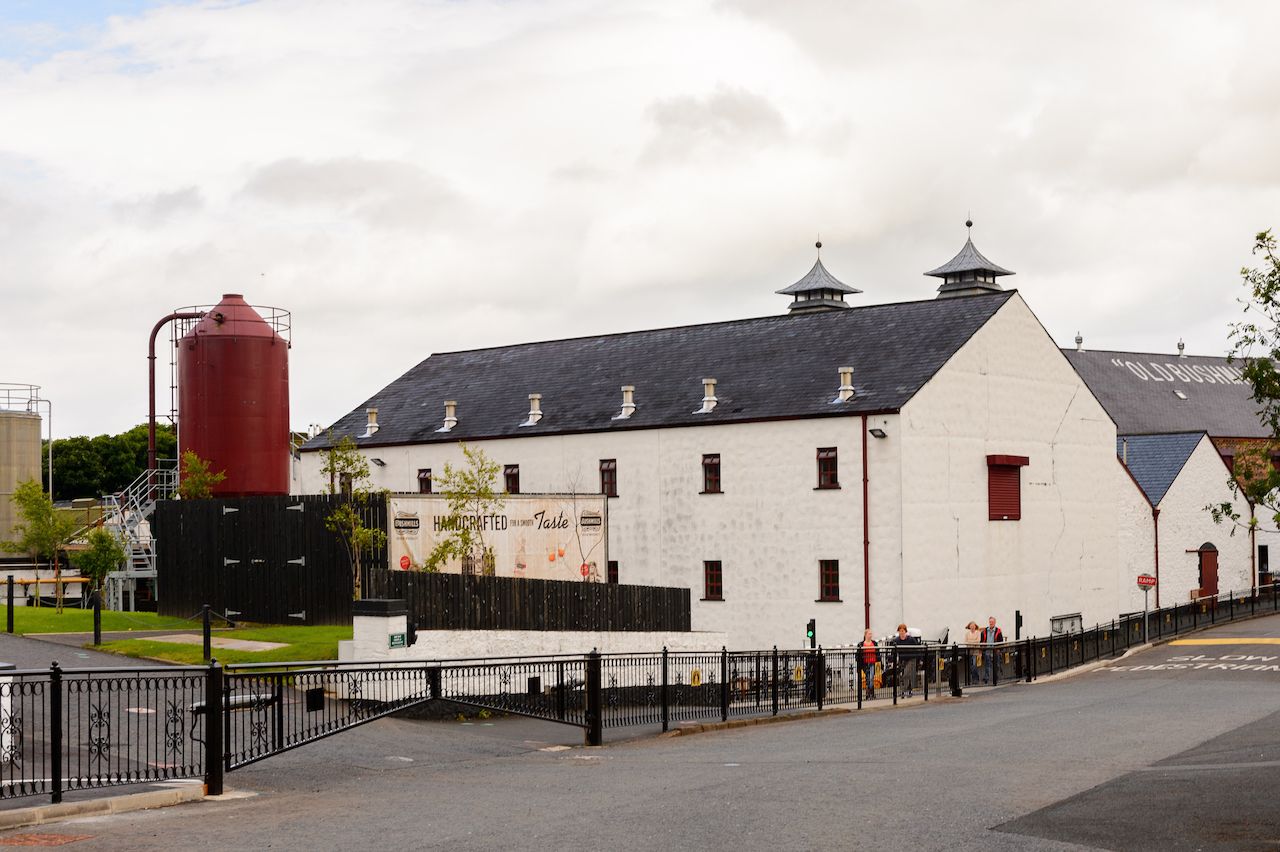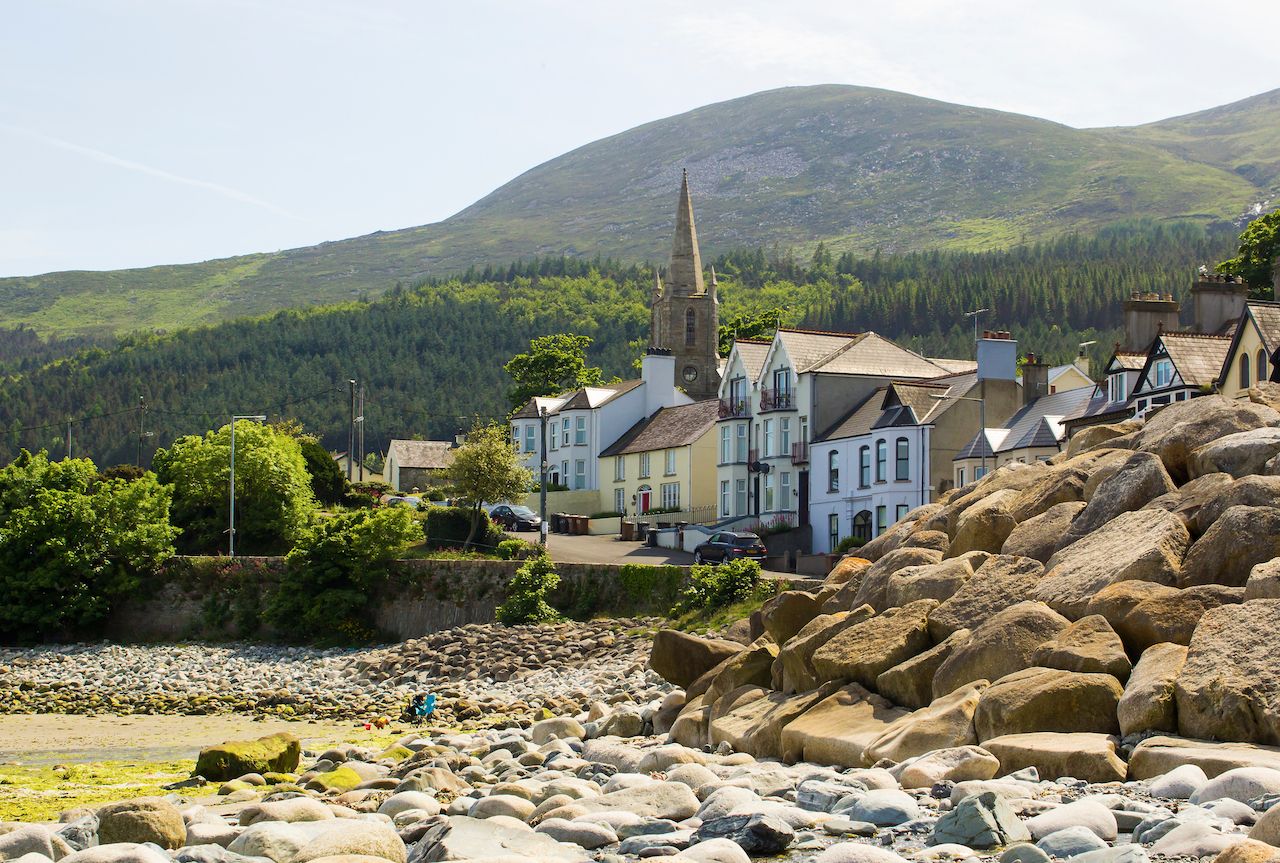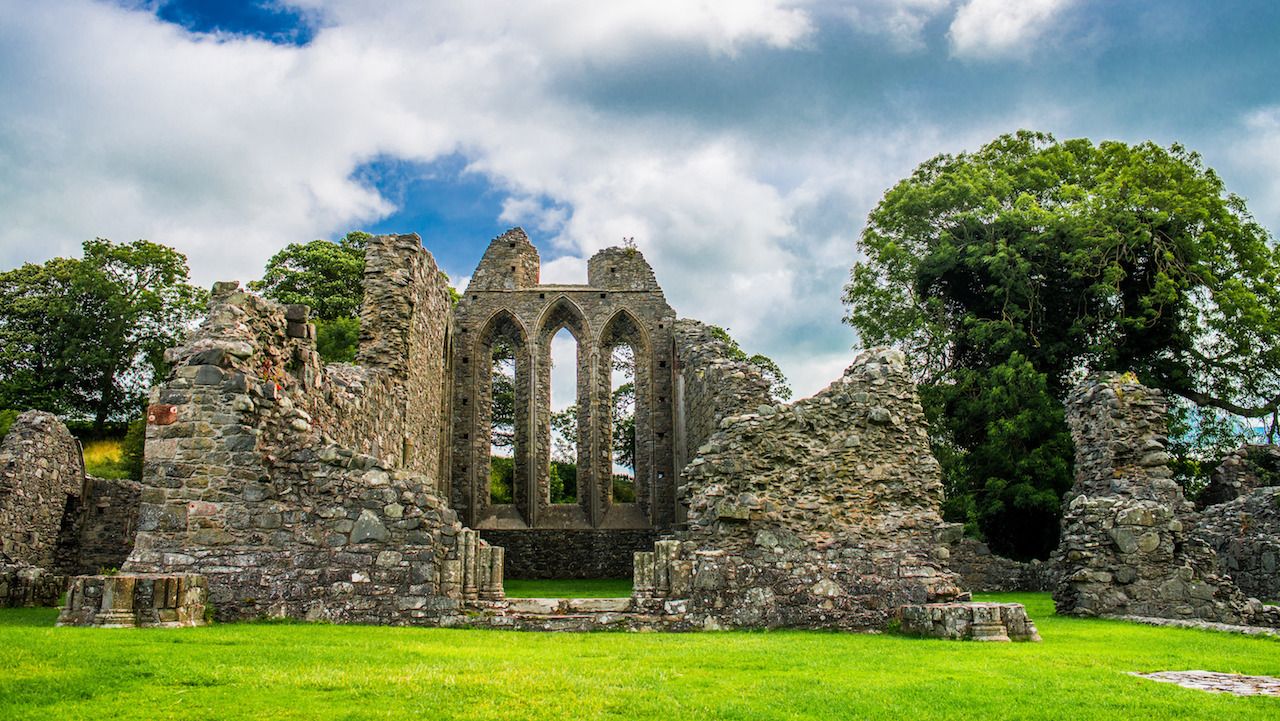As the largest city in Northern Ireland and the country’s main transport hub, Belfast is well connected to plenty of other exciting destinations in the area. You can reach any of the other towns and cities by bus or train, and there’s no shortage of day trips to suit even the most niche of tastes.

Photo: DrimaFilm/Shutterstock
Giant’s Causeway and Carrick-a-Rede Rope Bridge — It’s not often you get to visit one of the wonders of the natural world, but locals call the Giant’s Causeway the eighth wonder of the world. The rock formation takes its name from Fionn mac Cumhaill, the legendary giant of Irish mythology. The story goes that the causeway is what remains of a bridge built by Fionn to fight a Scottish giant. Another explanation is that the distinctive hexagonal structures were formed by volcanic activity, but that seems a little bit less fun.
A short journey around the coast will take you to Carrick-a-Rede Rope Bridge, which has connected the mainland with a small offshore crag since 1755. With the Atlantic winds, this is not for the faint of heart. Both sights can be reached in around an hour, either by car or the number 172 bus from Belfast. There are also countless private tour providers.

Photo: Paul Krugman/Shutterstock
Castle Ward, Winterfell in Game of Thrones — Increasingly, Northern Ireland is synonymous with HBO’s Game of Thrones. The show makes good use of some of the most dramatic scenery in the world, and it’s found a lot of it in Northern Ireland. While Game of Thrones tours are available, avid fans who want to get a taste of the real Winterfell can also explore the area independently. Most of the sites from the show can be reached by car in under an hour. Highlights include the Castle Ward estate where Winterfell scenes are shot and the banks of Strangford Lough and Tollymore Forest Park, which are used for many of the wilderness shots.
Photo: Joaquin Ossorio Castillo/Shutterstock
Even more Game of Thrones filming locations — While Castle Ward will probably only appeal to Thrones superfans, some other filming locations are impressive attractions in their own right. The Dark Hedges is one of the most photographed locations in Northern Ireland; on the show, it serves as the King’s Road where Arya escapes King’s Landing and other characters begin their journeys to the north, but the enchanting tunnel of beech trees have always been popular with tourists.
Further up the coast, closer to the Giant’s Causeway, is Ballintoy Harbour, a historic fishing village that doubled as Pyke of the Iron Islands on Thrones. Drive a little bit further and check out Downhill Beach, aka Dragonstone. No, the castle does not really exist, but you can peek inside the cave where Melisandre birthed her demon shadow baby. Beyond the pop culture connection, any of these places are scenic, peaceful places to spend a day outside of the city.

Photo: Anton_Ivanov/Shutterstock
Old Bushmills Distillery — Once you’ve finally had your fill of the black stuff, be sure to check out the most exciting booze coming out of Ireland these days: Irish whiskey. An hour north of Belfast is the coastal village of Bushmills, which of course is home to the Old Bushmills Distillery. Bushmills isn’t just the oldest Irish whiskey distillery, it’s the oldest continually licensed distillery, period. It received a grant from King James in 1608, and the trademark license in 1784. Every batch of Bushmills is made onsite at this distillery, farm-to-glass, making it one of the few brands where the quality of the spirit is on par with its mass popularity. A tour costs just under a tenner, and takes you through the history of Irish whiskey distilling and the Bushmills brand, and more importantly, includes a sample of five expressions.

Photo: Mick Harper/Shutterstock
Newcastle — You’ll find Newcastle just an hour south of Belfast by car. This little seaside town was a popular holiday resort for Belfast locals before the days of budget airlines. Nowadays it’s even more popular as a destination for a Sunday drive.
It has everything you’d expect from a day at the beach: a coastal promenade, arcades, ice cream parlors, and small businesses selling fancy goods. It’s also the gateway to Slieve Donard, Northern Ireland’s highest peak, and is near several great hiking paths, rock climbing routes, and epic gorge-walking opportunities come summertime. If you’re in the mood for a bit of high-class dining while you’re in town, you’ll want to look no further than the eponymous Slieve Donard Hotel.

Photo: Colin Majury/Shutterstock
Lough Neagh — The largest lake anywhere in the UK or Ireland can be found just over half an hour east of Belfast by car. The banks of the Lough are popular with walkers and cyclists, and just about any spot along the vast shore would be perfect for a quiet picnic on a warm day.
The best day of the week to visit is a Sunday in the summer months, as you’ll be able to avail of the Maid of Antrim cruise. This will give you a view of the Lough’s clear waters and all of the quaint villages along the shoreline. Or if you’re up for the challenge, you can pack a lunch and paddle out in a canoe. If you’re lucky, you might even encounter some of the North’s best-loved residents, the Lough Neagh seals.

Photo: Lyd Photography/Shutterstock
Downpatrick — Downpatrick is one of the most important ecclesiastical sites in western Europe. It’s named after Ireland’s Patron saint, Patrick. In town, you’ll find St. Patrick’s final resting place on the location of a monastery that dates to the 1100s.
This isn’t just a religious pilgrimage, though. The nearby Saint Patrick Centre tells the story of the man who drove the snakes out of Ireland, but it also situates that story in the history of pre-Christian Ireland. You’ll learn about how monastic sites in Ireland, just like Downpatrick, were the sole havens of learning during the Dark Ages and eventually restored enlightenment to Europe. If that’s not your thing, Downpatrick is also the home of Ireland’s only remaining mainline steam engine.